Contents
Crinipellis scabella is also known by the Latin name Crinipellis scabella. A lamellar species from the genus Crinipellis, which is part of the large family Negniuchnikovye. Other names – Agaricus stipitarius, Marasmius epichlo, Agaricus stipitarius var. graminealis.
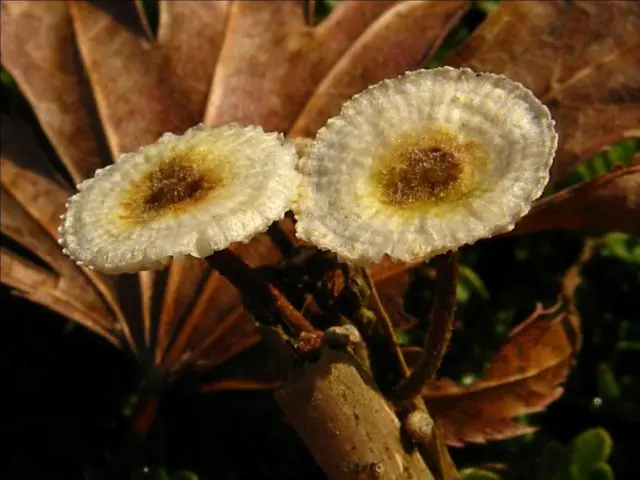
Crinipellis rough – a small mushroom consisting of a stem and a cap
What does crinipellis rough look like?
The species forms small fruiting bodies with fragile pulp and non-uniform color. The main background of the upper part is cream or whitish with a gray tint. Center in contrasting brown or brick color.
The edges are finely scaly, the coating is dark chestnut with a reddish tinge. Over time, the flakes crumble or fade, merging with the main tone.
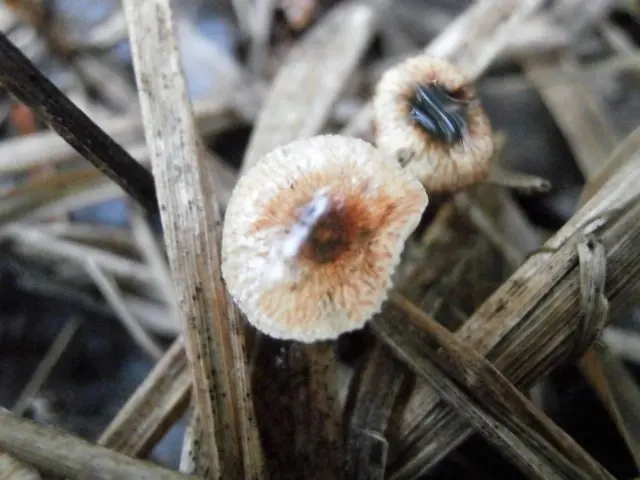
The dark fragment in the center remains unchanged with the age of the mushrooms
Cap Description
At the beginning of the growing season, the cap of young specimens is semicircular with concave edges and a slight conical bulge. At the next stage of development, the tubercle straightens, in its place a shallow depression forms. Adult crinipellis is rough with a prostrate cap and clearly defined serrated edges, as well as small cracks. The cap is mostly regular rounded, less often with raised edges.
Characteristic:
- The maximum diameter is 1,5 cm, among a kind such mushrooms are considered large, the average size is within 0,8 cm.
- The surface in damp weather is mucous, at low humidity it is velvety, finely scaly with longitudinal radial stripes.
- The spore-bearing layer consists of sparsely located plates descending to the stem and protruding beyond the edges of the cap, cream or light beige in color, the color does not change during the growth period.
Microscopic spores are light cream.
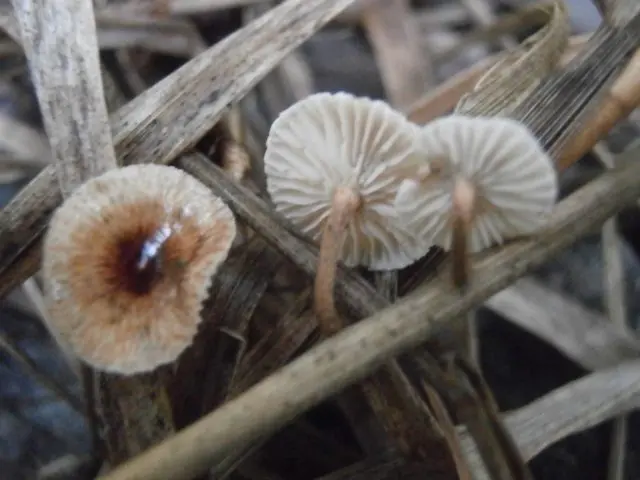
The pulp is springy, very fragile and thin, whitish in color.
Description of the leg
The central leg is disproportionate in relation to the upper part. Grows up to 5 cm. Slightly curved, thin, cone-shaped, thickened near the mycelium. The structure is rigid, longitudinally fibrous, hollow. The surface is covered with a small pile from below, closer to the top – with flakes.
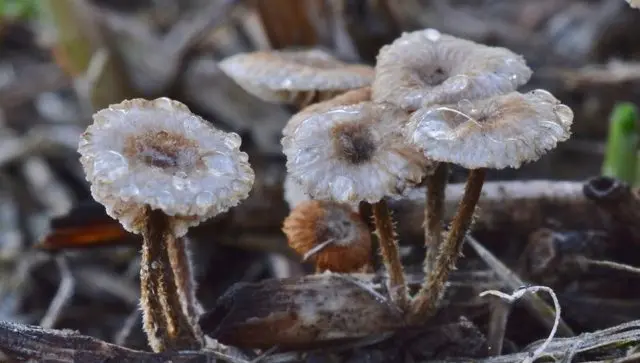
The color of the legs is dark brown, closer to black
Where and how to grow
Crinippellis is a common species, distributed throughout Our Country without climatic preference. The main accumulation is in the central, European part, in the Caucasus, the Urals and Siberia. It bears fruit from the beginning of summer to December in large colonies on the remains of grass, preference is given to cereals. And also on fallen leaves, forest edges.
Is the mushroom edible or not?
Fruiting bodies with a sweetish taste and a slightly pronounced mushroom smell. The mushroom is of no nutritional value due to its small size.
Twins and their differences
Outwardly, the rough rotten rot is similar to the rough crinipellis. Grows only on woody debris in a humid environment. Fruiting from mid-summer to autumn. Externally, the twin is distinguished by a pronounced ribbed surface of the cap and the absence of dark pigment in the center. Kind of inedible.
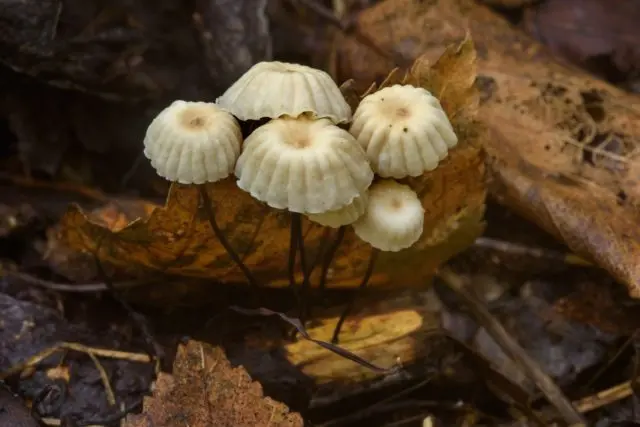
Leg very dark, without hairy or scaly surface, smooth
Conclusion
Rough crinipellis is an inedible species, very small in size with fragile, thin flesh. It bears fruit from the end of autumn until the onset of frost in compact groups, occupies large areas, but due to its small size it is poorly visible in the grass.









